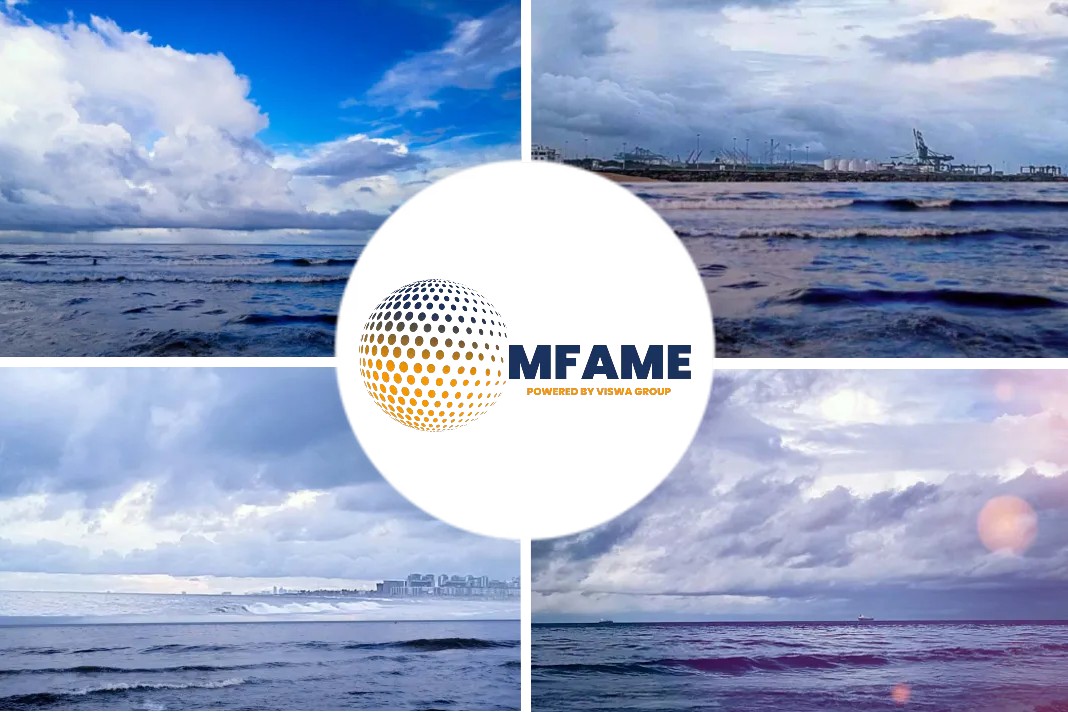UK MAIB issued a safety bulletin, regarding the investigation of an auxiliary boiler explosion on board the container ship “Manhattan Bridge” to highlight that if signs of waxing in fuel tanks and fuel systems are evident, actions must be taken immediately. A build-up of waxy deposits in boiler burner’s fuel supply filter was one of the likely causes of the flame failure onboard Manhattan Bridge resulting in one fatality and one serious injury in early 2017.
Figure 1: Manhatten Bridge
The incident:
At about 2304 on 19 January 2017, an auxiliary boiler furnace explosion occurred in the engine room on board the Japan registered container ship Manhattan Bridge as it was berthing alongside a container terminal in Felixstowe, England. Manhattan Bridge’s second engineer and an engine room oiler were investigating a boiler flame failure alarm at the time and were caught by the blast. The oiler suffered severe injuries and died soon after the explosion. The second engineer suffered burn injuries to his face and right arm, which required a skin graft.
The boiler had tripped out several times due to flame and ignition failures earlier in the day and had been successfully restarted by the second engineer.
Figure 2: Boiler and burner unit
Following the accident, waxy deposits, sufficient to cause intermittent fuel supply problems, were found in the boiler’s distillate fuel supply filter.
Fuel samples tested against the latest international marine fuel quality standard identified that wax crystals large enough to block the filters could start to form in the fuel at a temperature of 14°C or below. The air and sea temperature at the time of the accident at Felixstowe was 4°C.
The fuel, which was loaded on board 2 months earlier, had been tested against an older version of the fuel quality standard. The older standard did not include a test to identify cold filter plugging points.
The requirement to comply with increasingly stringent low sulphur emission regulations in sulphur emission control areas (SECAs), such as the North Sea, has increased demand for low sulphur marine gas oils (MGOs). Some low sulphur MGOs have a higher paraffin content and are therefore more susceptible to waxing in cold conditions.
Safety issues:
- Some low sulphur distillate fuels have a high paraffin content and are therefore more susceptible to waxing at low temperatures
- Waxing in fuels can cause filter blockage and combustion problems
- It is essential that vessel operators carefully consider expected ambient air and sea temperatures when purchasing low sulphur marine gas oil
- When operating in cold climates, the visual appearance of distillate fuels should be closely monitored to identify signs of waxing. The first indication will become evident when the fuel reaches its cloud point temperature; the fuel will become hazy or cloudy
- Maintaining the temperature of the fuel above its cloud point will prevent waxing
- The use of cold flow improver chemicals should only be used as a last resort to address the problem once it has arisen, not as a preventative wax control measure
Safety Lessons:
It is essential that vessel operators carefully consider anticipated ambient air and sea temperatures that will be experienced during the voyage when purchasing low sulphur MGO bunkers. Such information should be used to identify the required cold flow characteristics of the fuel being supplied using CP and CFPP as key metrics. When this is impractical, it is important to establish the CP and CFPP of the fuels carried on board through sample testing.
When operating in cold climates, the risk of waxy residue developing in the vessel’s fuel lines can be controlled by:
- Closely monitoring the visual appearance of low sulphur MGO bunkers for signs of wax precipitation.
- Conducting regular fuel filter inspections and close monitoring of fuel system pressures.
- Maintaining the temperature of the low sulphur MGO in the vessel’s tanks and pipework above the CP and CFPP temperatures to avoid the possibility of filter blocking.
The addition of cold-flow improver chemicals to the low sulphur MGO in the vessel’s storage tanks should only be considered as a last resort under the strict guidance of an additive supplier.
Did you subscribe for our daily newsletter?
It’s Free! Click here to Subscribe!
Source: MAIB




















